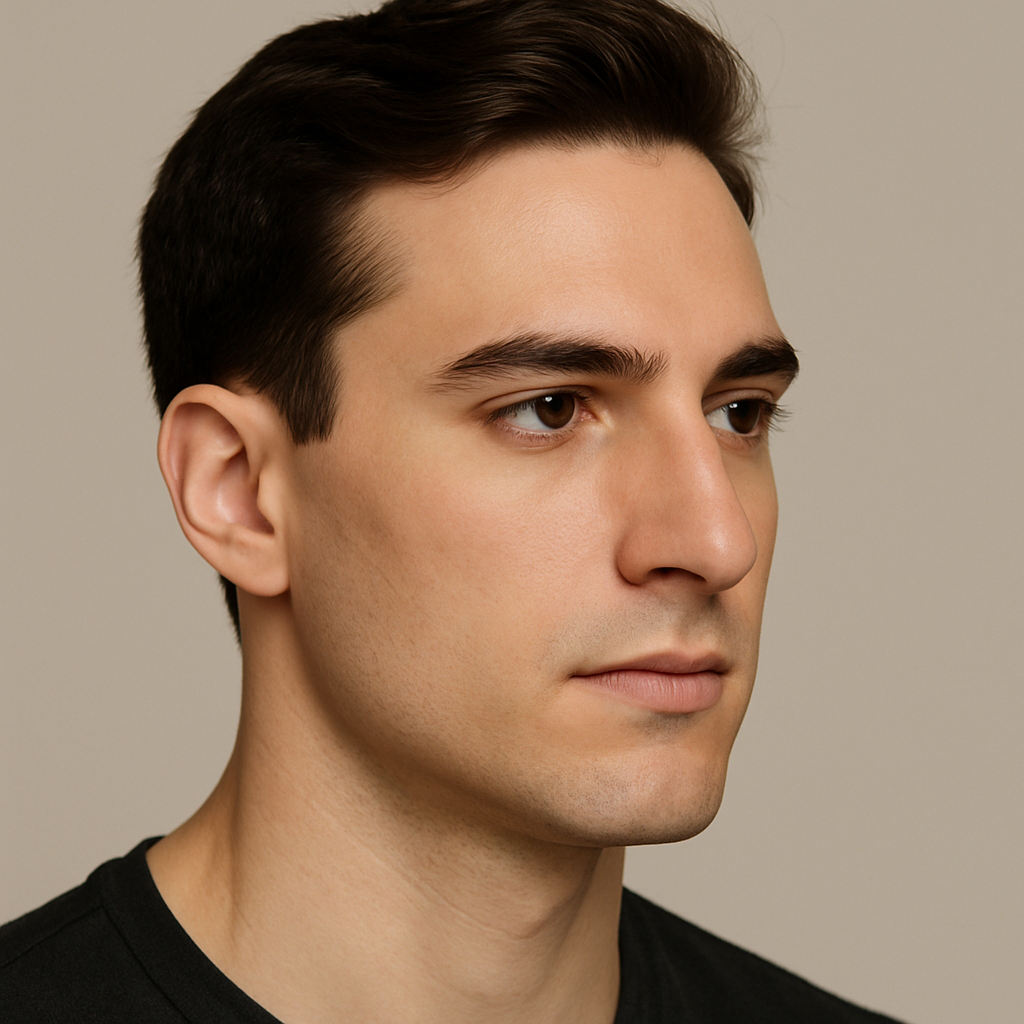Form & Function, Harmonized
Rhinoplasty
Female Rhinoplasty
Female rhinoplasty focuses on elegant refinement—smoothing the dorsum for a beautiful, continuous profile, defining and supporting the tip for crisp yet natural contour, and narrowing where appropriate to bring the nose into harmony with the eyes, lips, and cheeks. When profile balance calls for it, subtle chin augmentation may be recommended to enhance projection and create a more proportional facial silhouette.
Form and function are addressed together. Structure-preserving, airway-supportive techniques (e.g., septoplasty, internal valve support/spreader grafts, and stable tip frameworks) are used so that breathing is protected—not compromised—while achieving soft, feminine lines that still look like you.
Male Rhinoplasty
Male rhinoplasty refines the nose while preserving a strong, masculine character—think straight, well-defined dorsal aesthetic lines, a smooth yet powerful profile, and a supported, non-over-rotated tip. Width and projection are adjusted to harmonize with the brow, lips, chin, and jaw so the result looks natural and proportionate—not softened or feminized. When indicated, subtle chin or jawline enhancement may be considered to balance the profile.
Planning accounts for skin thickness and cartilage strength, using structure-preserving, airway-supportive techniques (e.g., septoplasty, valve support/spreader grafts, stable tip frameworks). The goal is a refined profile with durable support and uncompromised breathing.
Ethnic Rhinoplasty
Ethnic rhinoplasty is a personalized approach that refines the nose while honoring each patient’s heritage and individual features. The goal is to enhance shape, symmetry, and facial balance—and to shift attention toward the eyes—without diminishing the traits that express identity. Aesthetic goals vary by culture and by person; for example, some patients may prefer subtle bridge support or tip definition, while others may seek gentle narrowing or improved symmetry. There is no “one-size-fits-all” nose.
Planning respects differences in skin thickness, cartilage strength, and healing patterns across skin types. Techniques often emphasize structural support (septal/ear/rib grafts as needed), precise alar base work, and valve stabilization to protect and improve breathing. The result aims for harmony and function: a natural-looking nose that fits the face and preserves ethnic character.
Revision Rhinoplasty
Revision rhinoplasty addresses persistent concerns after a prior nose surgery—such as asymmetry, irregular contours, tip collapse, or ongoing breathing difficulty—by rebuilding stable support and refining shape. Because tissues may be scarred or cartilage is depleted, advanced structural techniques and grafts (from the septum, ear, or rib when needed) are used to restore smooth dorsal lines, a supported tip, and balanced width while protecting and improving airflow.
Careful analysis guides a tailored plan that respects skin thickness, healing patterns, and functional needs. The aim is a natural-looking, durable result that shifts attention back to the eyes and harmonizes with the rest of the face—without compromising breathing.
How Rhinoplasty Can Help
Correct septal deviation and support the nasal valves to reduce obstruction and improve airflow-without compromising aesthetics.
Soften a dorsal hump and define the tip for elegant, natural lines that don’t look “done”.
Align nose size and projection with the lips, chin, and cheeks; chin augmentation can be paired when helpful for balance.
Straighten and narrow where appropriate to create a more even, proportional look from the front.
Subtle refinement shifts focus from the nose to the eyes and overall expression.
Structure-preserving techniques maintain support for long-term shape and function while respecting individual features and identity.




